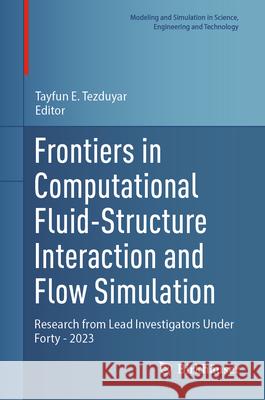Frontiers in Computational Fluid-Structure Interaction and Flow Simulation » książka
topmenu
Frontiers in Computational Fluid-Structure Interaction and Flow Simulation
ISBN-13: 9783031369414 / Angielski / Twarda / 2023
Frontiers in Computational Fluid-Structure Interaction and Flow Simulation
ISBN-13: 9783031369414 / Angielski / Twarda / 2023
cena 726,29 zł
(netto: 691,70 VAT: 5%)
Najniższa cena z 30 dni: 655,41 zł
(netto: 691,70 VAT: 5%)
Najniższa cena z 30 dni: 655,41 zł
Termin realizacji zamówienia:
ok. 22 dni roboczych
Bez gwarancji dostawy przed świętami
ok. 22 dni roboczych
Bez gwarancji dostawy przed świętami
Darmowa dostawa!
Computational fluid-structure interaction (FSI) and flow simulation are challenging research areas that bring solution and analysis to many classes of problems in science, engineering, and technology. Young investigators under the age of 40 are conducting much of the frontier research in these areas, some of which is highlighted in this volume. The first author of each chapter took the lead role in carrying out the research presented. Some of the topics explored include
- Direct flow simulation of objects represented by point clouds
- Computational investigation of leaflet flutter in thinner biological heart valve tissues
- High-fidelity simulation of hydrokinetic energy applications
- High-resolution isogeometric analysis of car and tire aerodynamics
- Computational analysis of air-blast-structure interaction
- Heart valve computational flow analysis with boundary layer and leaflet contact representation
- Computational thermal multi-phase flow for metal additive manufacturing
This volume will be a valuable resource for early-career researchers and students — not only those interested in computational FSI and flow simulation, but also other fields of engineering and science, including fluid mechanics, solid mechanics, and computational mathematics – as it will provide them with inspiration and guidance for conducting their own successful research. It will also be of interest to senior researchers looking to learn more about successful research led by those under 40 and possibly offer collaboration to these researchers.











